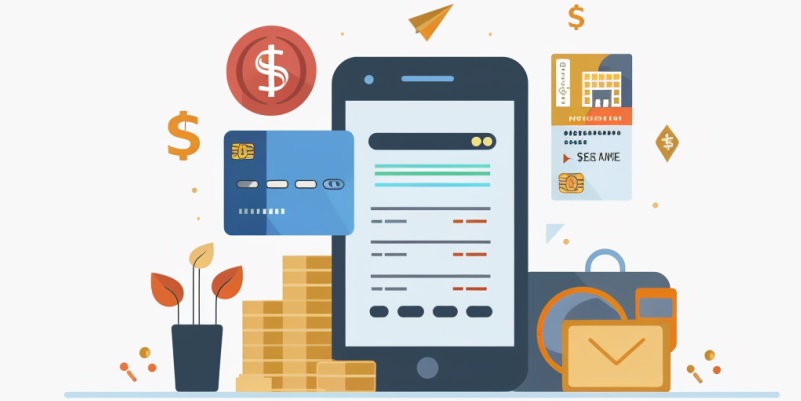The rapid evolution of the digital landscape has carved a new frontier for businesses. Those adapting quicker to the technological advancements, especially in the domain of digital payments, tend to outpace their less progressive counterparts. Meeting customer expectations in this field is no longer a choice but a necessity spurred by convenience, security, and a frictionless experience at the checkout stage. This article explores the central role of payment diversity in business growth, emphasizing how an array of payment gateway options can serve as a significant competitive edge.
The Imperative of Digital Transformation for Competitive Edge
Embracing Digital Payment Options
Providing a range of digital payment options isn’t just about embracing technology—it’s about understanding and catering to the varied preferences of a diverse customer base. In today’s market, businesses that recognize the importance of accommodating different payment methods like Apple Pay, Klarna, and PayPal, solidify their standing as customer-centric. This shift from seeing these tools as mere features to essential offerings is evidence of the evolving landscape. By integrating these popular payment methods, businesses not only bolster the convenience factor but also signify their commitment to inclusivity and technological savviness.
Bridging the Confidence in Technology Roadmap
Reports like the 2024 Digital Transformation and Next-Gen Tech Study serve as a litmus test for corporate readiness in terms of technology. While a majority of executives display a robust belief in their technology game plan, the stats reveal a worrisome gap—a mere 28% have thoroughly developed their digital skill strategy. This delta suggests that confidence isn’t always matched by competency or execution, which can be detrimental as the divide between industry trailblazers and stragglers widens. Modern businesses need to close this gap by aligning their confidence with tangible actions to enhance their digital competencies.
Enhancing Customer Experience Through Payment Integration
The Necessity of Modern Payment Solutions
For SMEs, modern payment solutions like PayPal’s ‘Complete Payments’ are less of a luxury and more of a critical component to remain competitive. These comprehensive systems anchor customer trust by offering familiar payment methods and the flexibility of emerging options like BNPL, which are increasingly gaining traction. Furthermore, by catering to the customers’ payment preferences and providing a seamless user experience, businesses not only drive up conversion rates but also establish trust and elevate the overall customer experience. This broad approach lowers the entry barriers for customers hesitant to adopt new payment technologies, fostering inclusivity and accessibility in the market.
The Importance of Conversion Optimization
Maximizing conversion rates hinges on the transaction’s final steps—payment. Flexibility in payment options becomes a paramount factor as it directly impacts a customer’s likelihood to complete a purchase. The integration of advanced technologies to support an array of payment forms, ranging from innovative digital wallets to tried-and-tested credit cards, eliminates possible friction points within the customer journey. This strategic move not only streamlines the checkout process but also resonates with a business’s commitment to customer convenience, oftentimes leading to increased customer loyalty and repeat purchases.
Adapting To Consumer Shopping Habits on Mobile
The Shift Toward Mobile-First Payment Experience
The meteoric rise in smartphone usage for shopping compels businesses to prioritize a mobile-first payment experience. Consumers now expect a smooth, secure, and quick checkout process on their mobile devices. Companies that have understood this shift, like Square and PayPal, have optimized their services to facilitate mobile payments efficiently. Developing an integrated system that supports mobile payments successfully captures the mobile-centric portion of the market, which is crucial not only for sustaining growth but also for expanding the customer base in the long term.
Adaptable POS Systems for Physical Retail
The expansion of digital payment methods is not confined to the realm of e-commerce. Physical retailers, through agile POS systems, can tap into the benefits of digital transactions. These adaptable POS solutions offer customers the convenience of various payment options, which were historically exclusive to online stores. By incorporating such technologies, traditional retailers can significantly enhance the in-store shopping experience, thereby meeting consumer expectations molded by the digital age. This fusion of digital and physical retail surfaces as a key differentiator for businesses aiming to maintain a comprehensive and accessible customer experience.
The Potential Role of Cryptocurrency in Payment Diversification
Integrating Cryptocurrency Payments
Cryptocurrencies, despite their immense potential, are yet to become mainstream in daily transactions. Nonetheless, their increasing popularity cannot be ignored by forward-thinking businesses. Integrating cryptocurrency payments now, using various plugins and services such as BitPay, allows businesses to gain an early adopter advantage. This not only positions these enterprises as innovative but also captures the growing demographic of crypto enthusiasts. As digital currencies continue to mature, businesses that have already laid the groundwork will seamlessly transition into the evolving payment ecosystem.
Gauging Crypto’s Consumer Acceptance
Cryptocurrencies offer a radically different value proposition from traditional payment methods. Their integration into business transactions remains in its infancy, primarily due to volatility concerns and a lack of widespread consumer acceptance. However, as the fintech industry burgeons and regulatory frameworks become more defined, we may witness an increase in the use of digital currencies for payments. For businesses mulling over the adoption of cryptocurrencies, staying abreast of market trends and consumer behaviors is vital. This vigilance ensures that they are ready to pivot when the acceptance of cryptocurrencies transitions from a novel concept to a commercial norm.
Each section of the outline has been structured to contribute to an engaging narrative on how diversified digital payment methods drive business growth by offering customers flexibility and security while enhancing transaction efficiency.

